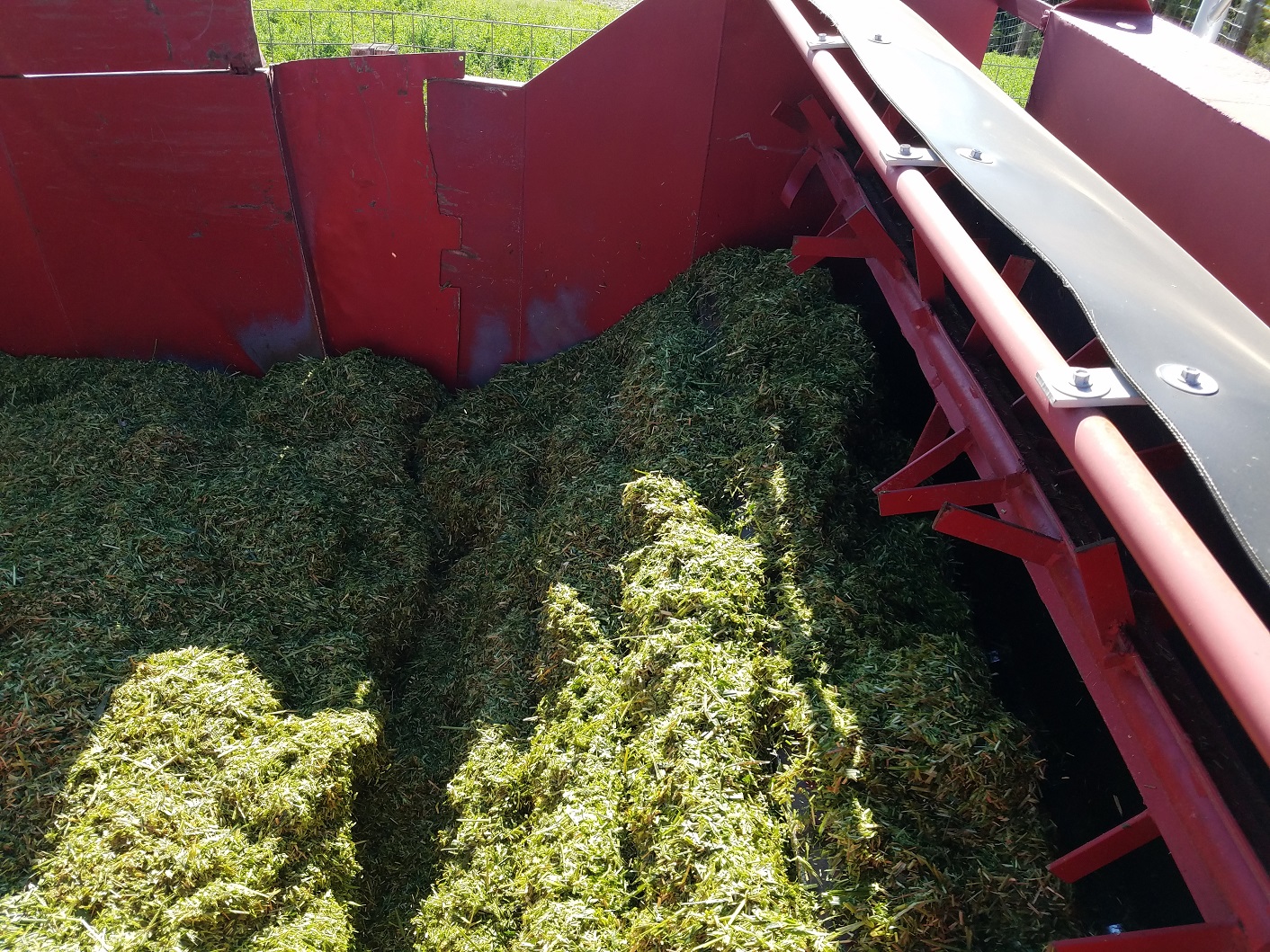Ben Beckman, Nebraska Extension Educator
Brad Schick, Nebraska Extension Educator

Developing cattle rations without distillers products to provide moisture and protein is an issue on many producers’ minds. One option this summer is to cut fall planted rye or spring oats, wheat, triticale, or barley for silage. Small grain silage can add moisture and some protein to rations and help fill the gap before corn silage is ready to harvest this fall.
As with any ensiled feed, proper moisture at harvest is essential to getting a good pack and fermentation. Silage should be harvested at 60-70% moisture. Earlier stages of maturity in small grains will typically have higher moisture content than more mature plants. Higher moisture contents will result in improper fermentation and spoilage. Too dry and we get a poor pack, heat, and more spoilage. Figuring out exactly where this sweet spot is can be difficult, but there are several at home methods we can use to figure out where we stand.
One of the easiest ways to check moisture content is the squeeze test. Start by chopping a small test area. Grab a handful of fresh chopped silage and squeeze it in your hand as tight as you can for about 30 seconds. If juice drips from the sample, it is too wet for a good ensile and proper fermentation.
If no juice drips out, open your hand slowly. If the ball falls apart quickly and your hand is barely wet, the forage is too dry. We either need to mix our cutting with wetter parts of the field, adjust for a finer cut, or add lots of water to ensure a good pack.
While the squeeze method is a good in field test, to really make sure we know moisture content, we need to use some tools at home to measure the amount of water in your forage. This can be done with specialized tools like a Koster moisture tester that come with instructions or everyday items like a microwave or a food dehydrator.
If you’re wanting to give it a go at home, we again need to cut a test area and take a sample. Next, weigh out a set amount on a scale, 100 grams is a good size and makes things easier math wise later. Don’t forget to zero your scale or take into consideration the container you are using to weigh with. This shouldn’t’ be counted in our initial weight. Select a scale that will show differences to at least the ones place. If it can go to tenths, all the better. Next, we remove as much moisture from the sample as possible by either hot air or in the microwave.
If using a dehydrator, spread out the sample evenly and turn it on. Let the dehydrator run overnight and, in the morning, weigh the sample again. The sample should be lighter due to the moisture that has been lost. Spread it back out and test again in a few hours. If the sample is more than 2 grams lighter, keep on drying. Once the sample doesn’t change more than 2 grams in weight from the previous weighing, we know we have gotten as much moisture out as possible and this is our final weight.
If you’re using a microwave, set the sample in a microwave safe container and cook for 2-3 minutes on medium-low power. If the sample starts to char, you’ve gone too long or need to lower the power setting. Putting a glass with a bit of water in the back corner of the microwave can help prevent edges from charring. Mix the sample then run again for about 2 minutes on low. Continue this until you feel the forage starting to dry, then shorten your microwave time to 30 seconds and begin weighing after each go. As before, once we have less than 2 grams difference between weights, we have a final weight. If you are weighing the container and sample together, don’t forget to subtract the container weight from the final sample weight before we do our calculations.
Once you have a final weight, simply divide this by your initial weight (that 100 g we started with) and multiply by 100 to get the dry matter content. Just subtract this from 100 to get % moisture. For example:
For our final sample weight, we subtract the container and sample weight from the weight of the container itself:

Next, we divide our final weight by our initial weight:

Then we multiply by 100 to get % dry matter:

Finally, we subtract % dry matter from 100 to get our % moisture:

Interviews with the authors of BeefWatch newsletter articles become available throughout the month of publication and are accessible at https://go.unl.edu/podcast.
University of Nebraska-Lincoln
